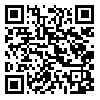BibTeX | RIS | EndNote | Medlars | ProCite | Reference Manager | RefWorks
Send citation to:
URL: http://tumj.tums.ac.ir/article-1-197-en.html
Normal
0
false
false
false
EN-US
X-NONE
AR-SA
MicrosoftInternetExplorer4
Background: Too many studies are in the process
of determining the probable role of immune system in the etiopathogenesis of
nasal polyposis. This study was designed to identify the probable participation
of Th1, Th2 lymphocytes in the induction and progression
of nasal polyposis.
Methods: Seventy-five patients, 42 male and 33 female, with
nasal polyposis were examined for total serum IgE, specific serum IgE and reaction to skin test for differentiating allergic from
non-allergic participants in Rasoul Akram Hospital during 2010. To determine the possible correlation of allergic
reactions in the upper respiratory tract and nasal polyposis, cytokine gene
expression was evaluated on the extracted RNA by
RT-PCR. The data were analyzed by using c2, independent t-test, correlation and
Receiver operating characteristic (ROC)
curve.
Results: The mean
age of participants was 38 years (18-81 years). IFN-γ
and IL-4 gene expressions were more prevalent
in allergic than non-allergic individuals (IFN-γ:
39.5% vs. 14.2%, P=0.3 and IL-4: 44.7% vs. 18.9%, P=0.02, respectively). IL-10 and IL-12 (P35 and P40 fractions) genes were not
significantly different between the two groups. IL-10 and IL-12 (P35, P40) genes did not differ significantly either.
Conclusion: This research suggests that overproduction of
cytokines and an imbalance of Th1
and Th2 cell production may
play an important role in the pathophysiology of allergic or non-allergic nasal
polyp formation. Thus, although nasal polyposis is a multifactorial disease
with several different etiological factors, chronic persistent inflammation is
undoubtedly a major factor irrespective of the etiology.
| Rights and permissions | |
 |
This work is licensed under a Creative Commons Attribution-NonCommercial 4.0 International License. |





